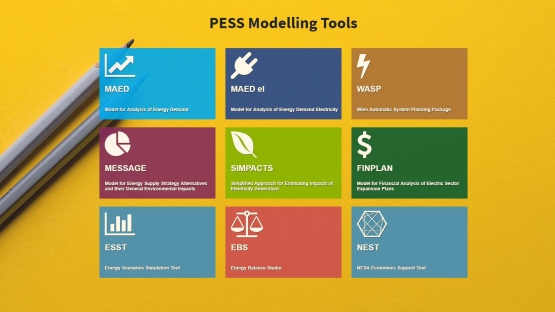Developing effective national energy strategies is crucial to meet countries’ expanding and shifting energy needs. It is a complex process that can help governments to protect the environment, improve the health of citizens, reduce energy related costs and lead to a sustainable economy.
Coming from 19 Member States, 20 experts in energy planning came together at the IAEA last week to discuss how to best enhance the IAEA’s analytical tools for energy system analysis and planning, thereby strengthening the support to Member States in developing sustainable energy strategies. They identified future directions for development of these tools and related training programmes.
“The Agency is committed to helping Member States with practical solutions for their energy planning,” said Huang Wei, Director of the IAEA Division of Planning, Information and Knowledge Management, opening the Technical Meeting to Review the IAEA’s Methodologies and Analytical Tools for Sustainable Energy Development.
“We continuously develop, maintain and upgrade various energy modelling tools that enable Member States to make smart energy choices in the context of Sustainable Development Goals and Paris Agreement.”
Decisions on national energy strategies involve many key stakeholders to consider all possible energy supply and demand options. The IAEA provides technical assistance to its Member States, especially to developing countries, to improve their capabilities for performing integrated energy assessments and formulating long term strategies.
“There is no institution in the world that offers such a complex system of analysis and full scale approach to capacity building in the area of energy planning other than the one that the IAEA has developed,” said Mladen Zeljko, a meeting participant, and Head of Department for Energy Generation and Transformation at the Energy Institute Hrvoje Požar, Croatia.
The Agency’s tools and methodologies are being constantly enhanced and improved to keep them up-to-date according to new computational platforms, innovative capacity building practices, and the evolution of energy related technologies.
“IAEA’s comprehensive portfolio of energy system modelling tools and support services are critical for many Member States to build up the in-country analytical skills needed to develop long term strategic energy plans,” emphasized the Chairman of the meeting Guenter Conzelmann, Director of the Center for Energy, Environmental and Economic Analysis of the Argonne National Laboratory in US.
Based on review and discussions, participants provided a series of recommendations to continue the improvement of the tools and training materials. In particular, the expansion of capabilities of these tools to reflect current transformational changes of the energy system towards higher penetration of clean energy sources.
“Meeting participants recommend to continue enhancing and adapting the Agency’s portfolio of models in line with emerging new technologies resulting in a significant transformation of energy supply systems,” concluded the meeting Chairman. “Such shifts will change the analytical needs of many countries.”
IAEA’s comprehensive portfolio of energy system modelling tools and support services are critical for many Member States to build up the analytical skills needed to develop long term strategic energy plans.





